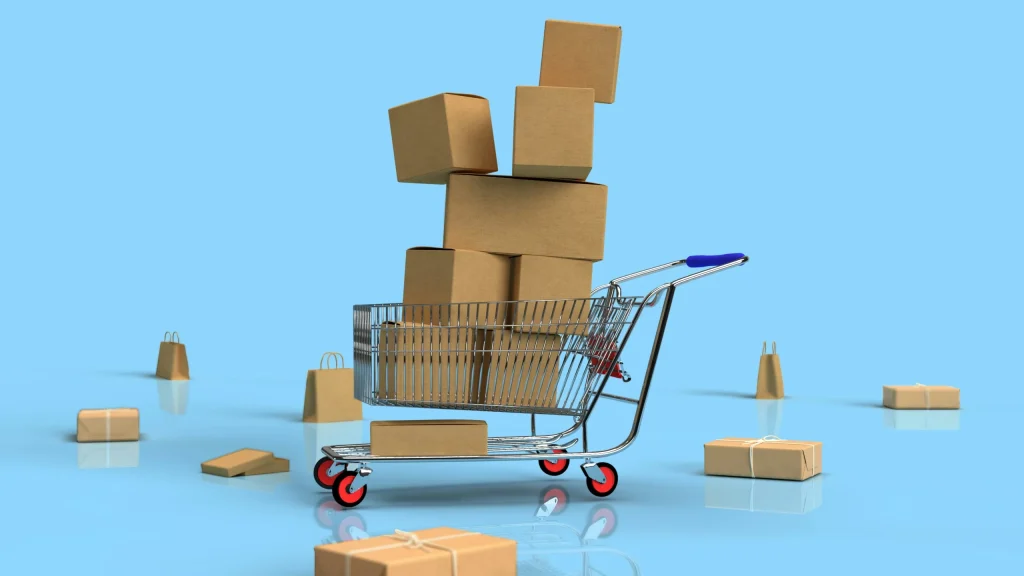Understanding and optimising Customer Lifetime Value (CLV) is essential for any ecommerce business looking to achieve sustainable growth. CLV represents the total revenue you can expect from a customer over the entire duration of their relationship with your business. It’s a critical metric that helps you make informed decisions about marketing spend, customer retention strategies, and overall business growth.
At Yellowball, we specialise in crafting bespoke ecommerce solutions in WordPress, WooCommerce, and Laravel, leveraging data-driven insights to help businesses like yours maximise CLV. This article will guide you through the process of calculating CLV, why it matters, and how you can use it to optimise your ecommerce strategy.
Why Customer Lifetime Value Matters in Ecommerce
Customer Lifetime Value (CLV) is a cornerstone metric in ecommerce, providing deep insights into the long-term profitability of your customers. It’s not just about numbers—it’s about driving smarter decisions across every facet of your business and increasing your conversion rates to ultimately drive a successful ecommerce website. Here’s why CLV is critical:
1. Determine Marketing ROI
CLV allows you to understand exactly how much you can afford to spend on acquiring new customers without compromising profitability. By calculating the lifetime revenue potential of a customer, you can set optimal customer acquisition costs (CAC) and avoid overspending on low-value segments. This ensures your marketing budget is used effectively, especially when scaling operations.
2. Segment Customers
Not all customers contribute equally to your bottom line. CLV helps you segment your audience based on their value, enabling you to tailor marketing and retention strategies. High-CLV customers can be rewarded with exclusive perks or loyalty programs, while low-CLV customers might benefit from cost-effective engagement campaigns to maximise their value.
3. Improve Retention Strategies
With CLV insights, you can identify key touchpoints in the customer journey where retention strategies like personalised marketing, better customer support, or targeted offers can make a difference. Increasing customer lifespan directly boosts long-term profitability.
4. Drive Sustainable Growth
Focusing on long-term metrics like CLV ensures your business prioritises strategies that yield consistent, scalable returns. Instead of chasing one-off sales, CLV encourages building meaningful, repeat relationships with your customers, leading to a more sustainable revenue stream.
The Formula for Calculating Customer Lifetime Value
The basic formula for CLV is:
CLV = (Average Order Value) x (Purchase Frequency) x (Customer Lifespan)
1. Average Order Value (AOV)
AOV is the average amount customers spend per transaction.
Formula:
AOV = Total Revenue / Total Number of Orders
For example, if your ecommerce site generates £100,000 in revenue from 2,000 orders, your AOV is £50.
2. Purchase Frequency (PF)
PF measures how often customers make purchases within a given timeframe.
Formula:
PF = Total Number of Orders / Total Number of Unique Customers
So, if 2,000 orders come from 500 customers, your purchase frequency is 4.
3. Customer Lifespan (CL)
CL is the average time a customer continues to shop with your brand.
Formula:
CL = 1 / Customer Churn Rate
If your churn rate (percentage of customers lost) is 20% annually, your customer lifespan is 5 years.
Example Calculation:
- AOV: £50
- PF: 4
- CL: 5 years
CLV = £50 x 4 x 5 = £1,000
In this example, each customer contributes £1,000 over their lifetime.
Advanced CLV Calculation: Gross Margin Adjustment
To get a more accurate CLV, consider adjusting for gross profit margins. This focuses on actual profit rather than revenue.
Formula:
CLV (Adjusted) = CLV x Gross Margin Percentage
For example, if your gross margin is 60%, the adjusted CLV is:
£1,000 x 0.6 = £600
Predictive Customer Lifetime Value (PCLV)
For a forward-looking approach, predictive CLV uses data models and machine learning to estimate the future value of customers. It accounts for variables like purchase patterns, customer behaviour, and marketing effectiveness.
Why Use PCLV?
- Identify high-value customers early.
- Allocate marketing resources more efficiently.
- Improve forecasting and financial planning.
How to Use CLV to Optimise Your Ecommerce Strategy
1. Refine Customer Acquisition Costs (CAC)
Compare CLV to CAC to ensure you’re spending appropriately on acquiring new customers. A healthy ratio is at least 3:1 (CLV).
2. Invest in Retention Marketing
Retention strategies such as loyalty programs, personalised email campaigns, and exclusive discounts can increase purchase frequency and customer lifespan.
3. Enhance Customer Experience
Exceptional user experiences—from website navigation to post-purchase support—encourage repeat purchases and foster loyalty.
4. Upsell and Cross-Sell
Leverage CLV insights to identify opportunities for upselling and cross-selling to high-value customers.
5. Segment and Personalise
Use CLV to segment customers into tiers (e.g., high, medium, low value) and create personalised marketing strategies for each segment.
Tools for Calculating and Tracking CLV
Here are some tools that simplify CLV calculation and analysis:
- WooCommerce Analytics: This gives you a clear window into your WooCommerce website’s performance, from tracking sales trends to understanding customer behaviour. It’s your go-to tool for smarter, data-driven decisions to grow your business.
- Google Analytics: Offers ecommerce tracking and customer insights.
- Klaviyo: A robust platform for email marketing and CLV tracking.
- ProfitWell: A subscription-based tool for advanced metrics like CLV and churn rate.
- CRM Platforms: HubSpot, Salesforce, and similar tools provide customer data for CLV analysis.
At Yellowball, we help clients integrate these tools with their ecommerce platforms, providing actionable insights to grow their businesses.
Challenges in Calculating CLV
While CLV is invaluable, certain challenges exist:
- Data Accuracy: Reliable data is critical for accurate calculations.
- Dynamic Customer Behaviour: Shifting preferences can impact long-term predictions.
- Complexity of Models: Predictive CLV requires advanced analytics tools and expertise.
Real-World Applications of CLV
1. Luxury Retail Ecommerce
High-end fashion brands often rely on CLV to identify and prioritise their most valuable customers. For example, a luxury retailer may segment its customer base and allocate a larger portion of its marketing budget to VIP clients. These high-CLV customers might receive exclusive perks such as early access to new collections, invitations to private events, or personalised styling consultations. By focusing on nurturing relationships with their most loyal clientele, luxury retailers not only increase repeat purchases but also strengthen brand loyalty and advocacy, turning these customers into long-term brand ambassadors.
2. Subscription Ecommerce Services
For subscription-based businesses, such as a beauty box company or meal kit service, CLV plays a pivotal role in shaping retention strategies. By analysing data on how long customers typically stay subscribed and their average spend, the company can create tailored offerings to extend customer lifespans. For instance, a beauty subscription brand may introduce loyalty rewards or personalised product recommendations based on previous purchases, keeping customers engaged and reducing churn.
3. Ecommerce Startups
Emerging brands often operate on limited budgets, making every pound count. By calculating CLV, startups can determine which marketing channels attract high-value customers and focus their efforts there. For example, a D2C home goods startup might find that social media ads targeting repeat buyers yield a higher CLV than other channels. By doubling down on what works, the business ensures profitability while scaling sustainably.
Calculating Customer Lifetime Value FAQs
Customer Lifetime Value (CLV) is the total revenue a business can expect from a customer over the duration of their relationship. It helps businesses understand how much to invest in acquiring and retaining customers. By calculating CLV, ecommerce businesses can optimise marketing strategies, allocate resources efficiently, and improve profitability to grow your ecommerce business.
CLV provides a long-term perspective on customer profitability, helping businesses focus on retention, upselling, and personalised customer experiences. For ecommerce businesses, it ensures marketing spend aligns with customer value, prevents over-investment in low-value segments, and prioritises strategies that maximise lifetime revenue.
To improve CLV, focus on customer retention by offering loyalty programs, personalised marketing, and exceptional post-purchase experiences. Upselling and cross-selling relevant products can increase average order value, while reducing churn extends customer lifespan.
For subscription businesses, CLV is calculated as:
CLV = Average Monthly Revenue Per User (ARPU) x Average Customer Lifespan
For instance, if ARPU is £50 and the average customer lifespan is 24 months, CLV is £1,200. Predictive analytics can further refine this calculation.
CLV measures the revenue generated by a customer over their lifetime, while Customer Acquisition Cost (CAC) is the cost of acquiring that customer. A healthy CLV ratio (at least 3:1) ensures that customer acquisition efforts are profitable.
Tools like Google Analytics, Shopify, Klaviyo, and ProfitWell provide metrics to calculate and track CLV. Advanced CRM platforms like HubSpot or Salesforce also offer in-depth analytics.
Boost Ecommerce Conversions and Customer Loyalty with Yellowball
Yellowball is an ecommerce web design agency based in London. Partnering with Yellowball means accessing a team of experts dedicated to designing and developing bespoke ecommerce websites tailored to your brand’s vision. With a proven track record of over 150 successful projects, we craft platforms that not only captivate your audience but drive measurable results.
Our expertise in WordPress web development, WooCommerce development, and Laravel ecommerce websites ensures seamless functionality, while our leading digital marketing strategies, including PPC campaign management and SEO services, are designed to boost conversions and improve customer lifetime value. From luxury brands to exceptional startups, we’ve delivered success stories for clients worldwide. Let’s create your next big ecommerce success together—contact Yellowball today!







